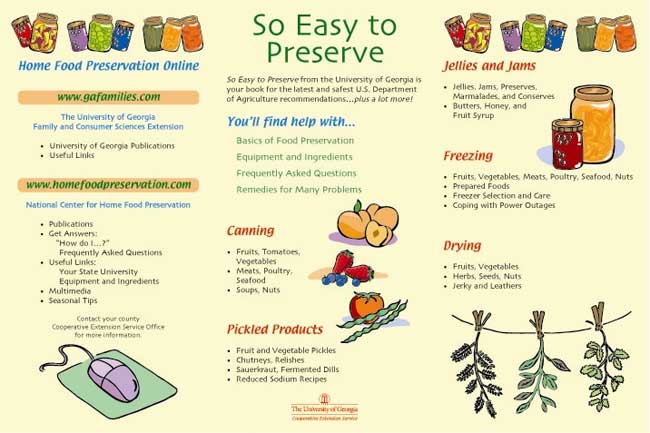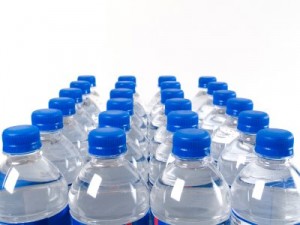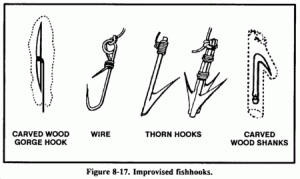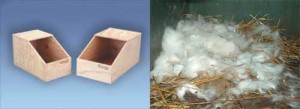Depression Era Gardening; What We Can Learn
No one wants to be the harbinger of bad news and no one wants to constantly hear a pessimist predict dire things for the future. However, if history repeats itself, as it usually does, sooner or later we Americans are going to be in for a bad economic slump. Take a close look at what is happening to some of the prosperous countries around the globe. Those of us who can remember the Great Depression hope the slump won’t be anything like that.
Folks born after the Depression can hardly believe times could have been so tough that it took welfare programs (WPA, NRA, CCC, PWA) plus World War II to pull us out of the Depression. If a person had a job, he/she hung on to it for dear life. Wages often amounted to whatever pittance the struggling employer could pay. Forget about a mininum wage set by law. Salaries were all minimum. Even this far past the Great Depression, everyone immediately knows to what era we refer if we mention the Depression. No one thinks of an economic slump in the sixties or eighties. It was that terrible time in the thirties when banks failed and World War I veterans marched on Washington, DC.
![]() As bad as it was, the Great Depression taught some not-to-be-forgotten lessons that could serve us well if we face another period of hard times. The Depression forced people to save and make the best of what they had. Self-reliance was a valuable lesson learned by many as they saw their wallets grow thinner. Maybe that’s why some of us today have a tendency to become pack rats hoarding anything that “might be useful later.” It’s a carryover from what our parents taught us when it was considered sinful to waste.
As bad as it was, the Great Depression taught some not-to-be-forgotten lessons that could serve us well if we face another period of hard times. The Depression forced people to save and make the best of what they had. Self-reliance was a valuable lesson learned by many as they saw their wallets grow thinner. Maybe that’s why some of us today have a tendency to become pack rats hoarding anything that “might be useful later.” It’s a carryover from what our parents taught us when it was considered sinful to waste.
Older gardeners are some of the best examples of frugality. We don’t throw out tools that need new handles. Instead we buy hoe handles, shovel handles, rake handles, and so on. We only discard a tool when it is absolutely consumed by the ravages of time. Even so, we lay it to rest with pangs of guilt over not having been able to make it last a little longer. The other side of the coin is that we gardeners tend to become fond of our tools. There’s the trowel that fits our hand just right or the clippers that are lightweight and so easy to use on vines and rose bushes. We keep sharpening old hedge clippers and limb loppers and we dislike tools made in Taiwan.
During the Great Depression, as a matter of necessity, people did more food gardening than now. Home canned goods in the pantry were worth their weight in gold. (It’s the same today!) Canning was an accepted summertime chore. There were no home freezers. Many people who lived where high humidity was not a prohibiting factor dried fruits and vegetables in the sun on racks on roof tops. Racks had to be protected from roving birds and insects during the day and they had to be brought inside before nightfall to avoid dampness. Some folks made drying racks and suspended them over the kitchen range, thus avoiding the outside problems. Drying fruits and vegetables also cut down on the cost of canning supplies—jars, rings, and lids. One of our modern electric dehydrators would have been a boon to canners then—that is, to persons lucky enough to have electricity.
Seed saving was a way of cutting down on garden costs, and neighbors often traded seeds, particularly when something new came along. Nowadays many of our plants are hybrids, and seed saving is risky as the seedlings from hybrids don’t produce the same as the parent plants. Seeds from the old reliable varieties will produce the same type plants over and over again. The drawback to many of the old varieties is that they are susceptible to certain blights, nematodes, etc. The hybrids have been developed to resist many of the things that plague the “tried and true.” (If you’re a seed saver, try putting a piece of a bay leaf in with your seeds to repel those tiny bugs that devour seeds and seem to appear out of nowhere.)
 Gardening was once learned by hands-on experience, as it was a way of life. Now, if there isn’t an experienced gardener around to answer questions for the amateur, there are any number of books, magazines, videos, etc., available. Gardening is not the chore it once was when there were no mechanized aids. Nowadays there are tillers to take the place of the horse and plow, and all sorts of nifty power tools have lightened hard chores.
Gardening was once learned by hands-on experience, as it was a way of life. Now, if there isn’t an experienced gardener around to answer questions for the amateur, there are any number of books, magazines, videos, etc., available. Gardening is not the chore it once was when there were no mechanized aids. Nowadays there are tillers to take the place of the horse and plow, and all sorts of nifty power tools have lightened hard chores.
The time to begin dealing with economic disaster is before it happens. Heed the Boy Scout motto “Be Prepared.” The cost of food is steadily increasing and most of us are spending more of our income at the supermarket than we’d like. Prices are going to continue to soar on canned goods, as the summer of 1998 was devastating to farmers in many parts of our nation and particularly across the South. Louisiana estimates that as many as 30 percent of its farmers may be forced out of the farming business as a result of more than one year of crop losses. Cattle suffered from the 1998 drought as cattlemen scouted other areas for hay to feed when normally cattle are grazing on grassy pastures. All of these disasters will eventually show up in higher prices for the consumer.
By raising much of our own produce we can offset quite a bit of our food expense. We should thank our lucky stars that our modern methods of preserving foods do not demand some of the drudgery that went along with the canning performed in kitchens of the past. Fresh surplus produce from our own gardens can be saved by canning, freezing, or drying and we can enjoy a snicker or two when we see the supermarket prices soar.
Preparation against economic hard times should begin as soon as soil can be worked. Service those rotary tillers and dig in. Garden should be situated well away from large trees and open to at least six to seven hours of sunlight per day. Where temperatures soar into the upper nineties and beyond, a little afternoon shade is desirable. Compost, well rotted barnyard fertilizer, or poultry litter should be worked into the soil and left for a few weeks to enhance the fertility of the soil.

Some gardeners prefer row planting, but many of us have converted to the raised bed method for several reasons—easy maintenance, space saving, less water, easy to harvest and replant, high yield, and so on. In our garden, we let grass grow between our beds which are four feet apart. Grass is controlled by mowing or using a string trimmer. No muddy shoes, and the grass provides comfortable walking. You’d be surprised how many vegetables can be harvested from controlled plots.
Plant the herbs and vegetables you like and will use. There’s no point in taking up space with something that looks good growing but you know you won’t use. Decide which vegetables work out best canned in jars and which are better frozen or dried. For instance, we prefer to can tomatoes, but there are folks who like to slice and freeze them. Still others like to dehydrate them.
If your pantry or freezer space is limited, try dehydrating some of your harvest. Dried fruits and vegetables take up far less space than frozen or canned ones. There are several dehydrators on the market. Ours was purchased from Sears a few years ago. It has several trays and has served us well. Although the instruction booklet gives information about almost anything one is likely to harvest, the best knowledge comes from experience.
We also dehydrate fresh herbs such as sweet basil. When the leaves are dried, crumble them into tiny pieces, store them in small air tight bottles, and use the basil in spaghetti sauce, soups, gravies, etc. A number of leafy herbs may be dried—parsley, sage, rosemary, thyme, etc. Drying your own supply assures freshness.

If you are fortunate enough to have a few fruit trees, keep in mind what you are going to save monetarily by preserving your surplus. If you are unfamiliar with the cost of dried fruit, take a stroll down the grocery aisle where the packages are displayed. That should make up your mind as to what to do with your surplus. Some fruits used for desserts are better canned in light syrup in jars—i.e., pears and peaches. Where time is short and the object is jelly, the juice from berry fruit may be frozen in airtight containers and later thawed out and made into jelly. Complete instructions for making delicious jelly may be found inside Sure-Jell packages. We prefer using commercial pectin over the old method of jelly making, as it is not so time consuming and there is less loss of juice in the process.
One should not overlook what Nature has to offer in the way of native plant yield. Dewberries, blackberries, and blueberries are usually abundant in their seasons. Mayhaws, wild plums, black cherries, grapes, muscadines—all of these make delicious jelly. In the fall there are various nuts—pecans, hickory, nuts, butternuts, etc. Nutmeats are best preserved by freezing them in airtight containers as soon as they are separated from their shells.
The possibility of an economic crisis is not to be taken lightly, as it can ruin people financially if it goes on for a long period of time. I take the optimistic view that Americans can survive almost anything if we get in touch with the soil and use common sense about other things. If we survived the Great Depression and World War II, we can survive other crises.
To those folks who are apparently married to their computers and not inclined to have rapport with a garden, I can only say that I have yet to see a computer serve a fresh tasty garden salad or some stir fried veggies.
Additional Research:
   |






Leave a Reply